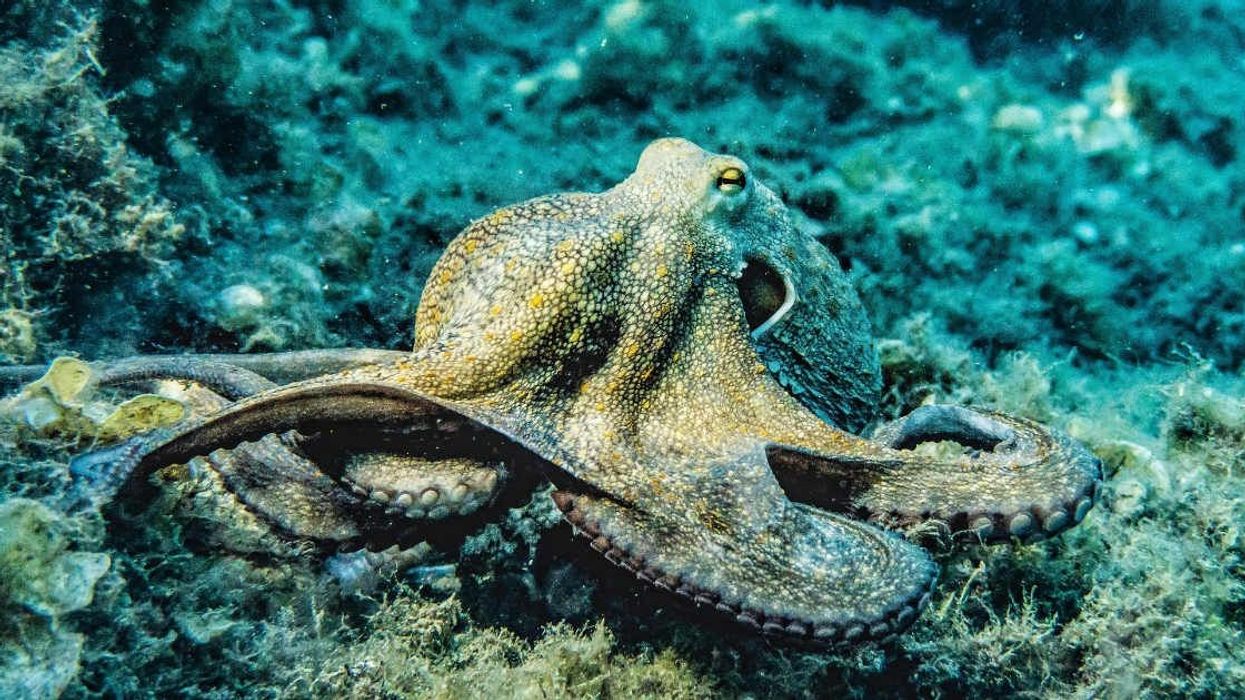The arctic is warming at twice the rate as the rest of the world, which means the sea ice is shrinking at a rapid rate. The arctic has its lowest amount of sea ice since scientists began monitoring it by satellite in the 1970s. It begs the question, can't we just refreeze the ice? The answer might actually be, "yes."
A team of Indonesian designers want to produce iceberg-making submarines. The team, led by architect Faris Rajak Kotahatuhaha, plans on creating a submergible vessel, which sounds a little bit like an elaborate ice cube tray. The submarine sinks below the surface of the sea, filling up a cavity with seawater. The salt is removed, and the water is frozen using a "giant freezing machine." The result is 16-foot thick and 82-foot wide hexagonal icebergs, which are then released into the sea. Why the hexagon shape? It allows the icebergs to interlock with each other, forming larger masses of ice. Each iceberg would take a month to create. The idea was recently named runner-up in an international design competition for sustainable ideas.
It's not the only plan to try to turn water that used to be ice back into ice. Researchers from the Potsdam Institute for Climate Impact Research in Germany devised a plan to spray trillions of tons of artificially created snow over Antarctica. The plan involved removing salt from water taken from the sea, then spraying it back over the land, causing it to turn into snow as it rains down over the continent.
RELATED: Climate change is unearthing artifacts from melting glaciers
Not all solutions involve creating new ice; some involve protecting the ice we already have. Ice911, a U.S. based nonprofit, has been working on a material to halt ice from melting. The highly reflective sand-like material is made of silicate glass, and can be placed on the ice in order to protect it from the sun. Tests on a frozen lake in Alaska proved successful. The ice was thicker and more reflective than the ice that wasn't treated with the substance.
Adding ice wouldn't do anything to change rising sea levels, but it could cool things down. "If enough (ice) is made, then it could ultimately alter the planet's temperature, which could in turn lead to reduced land ice melting and reduced sea level rise from that source," Andrew Shepherd, a professor of Earth observation at the U.K's Leeds University, told CNN. "But there are lots of 'ifs' along the way."
RELATED: New study finds whales might be our best defense against climate change
The fact that the ice is melting in the arctic is speeding up the melting of ice in the arctic. When the white ice melts, the surface of the sea turns darker. The darker surface traps more heat, which, in turn, causes the ice to melt. Putting more ice in the arctic is the cooler version of planting more trees in the forest.
Of course, the projects have drawn criticism, with some saying refreezing ice addresses the symptom, not the problem. In order to handle the cause, we need to curb what we're doing that's making the ice melt in the first place. Watching your carbon footprint is something anyone can do, even if you don't have the capability of building an ice-making submarine.

















 Screenshots of the man talking to the camera and with his momTikTok |
Screenshots of the man talking to the camera and with his momTikTok |  Screenshots of the bakery Image Source: TikTok |
Screenshots of the bakery Image Source: TikTok | 
 A woman hands out food to a homeless personCanva
A woman hands out food to a homeless personCanva A female artist in her studioCanva
A female artist in her studioCanva A woman smiling in front of her computerCanva
A woman smiling in front of her computerCanva  A woman holds a cup of coffee while looking outside her windowCanva
A woman holds a cup of coffee while looking outside her windowCanva  A woman flexes her bicepCanva
A woman flexes her bicepCanva  A woman cooking in her kitchenCanva
A woman cooking in her kitchenCanva  Two women console each otherCanva
Two women console each otherCanva  Two women talking to each otherCanva
Two women talking to each otherCanva  Two people having a lively conversationCanva
Two people having a lively conversationCanva  Two women embrace in a hugCanva
Two women embrace in a hugCanva 
 A reddit commentReddit |
A reddit commentReddit |  A Reddit commentReddit |
A Reddit commentReddit |  A Reddit commentReddit |
A Reddit commentReddit |  Stressed-out employee stares at their computerCanva
Stressed-out employee stares at their computerCanva
 Who knows what adventures the bottle had before being discovered.
Who knows what adventures the bottle had before being discovered. 
 Gif of young girl looking at someone suspiciously via
Gif of young girl looking at someone suspiciously via 

 A bartender makes a drinkCanva
A bartender makes a drinkCanva